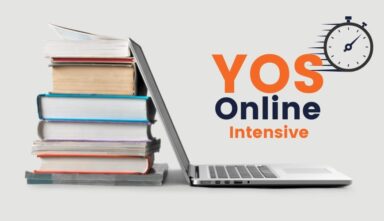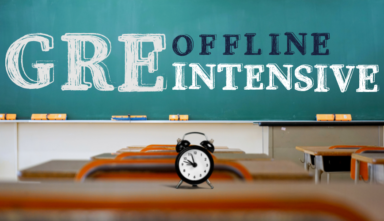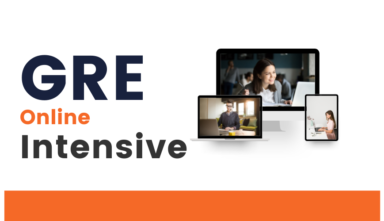About SAT
SAT – The Scholastic Aptitude Test– General Test is an entrance exam required by most colleges and universities for admission purposes. It is a multiple-choice test administered by College Board taken by all high school students who aim to pursue their undergraduate studying. Among your high school GPA, letters of recommendation from teachers, extracurricular activities, and personal essays; SAT score will also be reviewed. The higher your SAT score is, the more options for attending high qualified colleges will be available for you.
The SAT is mostly taken by high school students during the second semester of their second year of the first semester of their last year of high school. Hence, students should begin preparing for SAT earlier, while they also leave enough time to re-take the exam if they are not satisfied with the score of their first attempt.
Structure of SAT
The duration of SAT is 180 minutes with optional 50 minutes. These 180 or 230 minutes are divided into three or 4 sections. The three or four sections of the SAT are:
- Reading Test
- Writing and Language
- Mathematics
- Essay (Optional)
The Reading Test section has 52 passage-based reading questions with multiple-choice responses and time allotted is 65 minutes. The test taker is supposed to read passages and interpret informational graphics. The goal of this section is to measure a range of reading skills, as the test taker will be asked questions that require him/her to draw on the reading skills needed most to succeed in the subjects the passages are drawn from.
The Writing and Language section asks candidates to be editors and improve passages that were written especially for the test and that include deliberate errors. Candidates are required to write and edit; read; find mistakes and weaknesses; and fix them. There are 44 passage-based questions with multiple-choice responses and time allotted is 35 minutes.
Mathematics section covers math practices, emphasizing problem solving, modeling, using tools strategically, and using algebraic structure. The Math section has a total of 58 questions from which 20 questions are on the no-calculator portion and 38 on the calculator portion. 45 of the questions are standard multiple-choice questions and 13 student-produced response questions. Time allotted for Math Test – No Calculator section is 25 minutes, while time allotted for Math Test – Calculator is 55 minutes.
The Essay section is an optional one. The Essay section is like a typical college writing assignment for which candidates are asked to analyze a text. Total questions are 1 prompt, with points to consider and directions. Time allotted for this section is 50 minutes, within which candidates are expected to read a passage, explain how the other builds an argument to persuade an audience and support his/her explanation with evidence from the passage.
SAT Topics
The first section – Reading Test include passages of different lengths, ranging from 500 to 750 words and includes topics from a classic or contemporary work of U.S. or world literature; one passage or a pair of passages from either a U.S. founding document or a text in the Great Global Conversation; one passage on a social science topic from a field such as economics, psychology, or sociology; and two science passages that examine foundational concepts or recent developments in Earth science, biology, chemistry, or physics.
The second section – Writing and Language measures the practical skills that candidates use to spot and fix problems in writing. There are questions that test command of evidence which ask candidates to improve the way passages develop information and ideas. Some questions ask test takers to improve word choice, while some of the questions require them to read passages about topics in history/social studies and science and to make editorial decisions that improve passages. There are also questions that ask candidates about a passage’s topic development, organization, and effective language use and impact while some others are related to the building blocks of writing such as sentence structure, usage, and punctuation.
The third section – Mathematics will test candidates on math that they will rely on most in all sorts of situations. Mathematics questions are designed to mirror the problem solving and modeling they will do in college math, science, and social science courses, jobs that they hold, and their personal life. This section measures candidates’ fluency, conceptual understanding, and applications.
The fourth section – Essay measures how well candidates understand the passage and use it as the basis for a well-written, well-thought-out response. The Essay is scored in three dimensions: Reading, Analysis, and Writing.
Course Material
The essential learning materials for this course will be provided by the Instructor. All materials are suggested to help students develop their skills in decoding important information presented in text, numbers, and graphics; evaluating necessary information from different given sources; accumulating and arranging the information and establishing the relationships among them and cracking complex problems to arrive at an adequate conclusion; reading and understanding the written material; reasoning out and appraising the arguments; rectifying the written material in accordance with standard written English; helping candidates in analyzing and reproducing a given argument.
Learning, Grading, and Workload
This is a “Student Centered Learning” Course. All the materials will be used to develop your Critical Reasoning skills. This places responsibility upon each student to be present and prepared at each class and to participate actively in class and team discussion and work. The materials are offered to help your thinking about the skills you aim to develop.
You are grownups. The major responsibility for learning belongs to the student. Substantial outside effort is expected. Most students will be able to master this subject with a commitment of around one to two hours of homework.
Learning in this course is continuous and cumulative – each session is important. There will formal tests/examinations. Surprise quizzes are always a possibility. These tests, examinations, and surprise quizzes are designed to help you achieve a higher grade on the real SAT Exam.
Schedule and Assignments
The following schedule is a tentative one. The schedule and topics will be adapted around students’ needs, depending entirely on their progress.
Course Features
- Lectures 91
- Quiz 0
- Duration 32 hours
- Skill level All levels
- Language English
- Students 0
- Certificate No
- Assessments Yes
Curriculum
- 16 Sections
- 91 Lessons
- Lifetime
- Week 1 - Session 1Topic: Attacking the New SAT12
- 2.0What’s new in the redesigned SAT? Copy
- 2.1What are the primary skills assessed by the redesigned SAT? Copy
- 2.2What is the format of the redesigned SAT? Copy
- 2.3What will colleges do with my SAT scores? Copy
- 2.4What control do I have over my SAT scores? Copy
- 2.5Should I take the ACT as well? Copy
- 2.6What is the best way to prepare for the redesigned SAT? Copy
- 2.7How can I get the most out of my study sessions? Copy
- 2.8When and how often should I take my SATs? Copy
- 2.9What should I do the week before my SAT? Copy
- 2.10What should I do on the test day? Copy
- 2.11Take a Practice Test Copy
- Week 1 - Session 2Topic: The Language of Ideas: Vocabulary for SAT Evidence-Based Reading21
- 3.0The Language of Ideas and Learning Copy
- 3.1The Language of Argument, Reasoning, and Persuasion Copy
- 3.2The Language of Dissent, Criticism, and Rebellion Copy
- 3.3The Language of Power and Submission Copy
- 3.4The Language of Language and Literature Copy
- 3.5The Language of Judgment Copy
- 3.6The Language of Extremism and Exaggeration Copy
- 3.7The Language of Care and Restraint Copy
- 3.8The Language of Freedom Copy
- 3.9The Language of Change and Force Copy
- 3.10The Language of Dullness and Stasis Copy
- 3.11The Language of Truth, Truthfulness, and Beauty Copy
- 3.12The Language of Deceit, Error, and Confusion Copy
- 3.13The Language of Creativity and Productivity Copy
- 3.14The Language of Mystery, Surprise, Adventure, and Discovery Copy
- 3.15The Language of Harm, Deficit, and Decline Copy
- 3.16The Language of Kindness, Favor, and Benefit Copy
- 3.17The Language of Wisdom, Strength, and Skill Copy
- 3.18The Language of Capital and Wealth Copy
- 3.19The Language of Passion, Emotion, and Sensation Copy
- 3.20The Power Roots and Affixes for the SAT Copy
- Week 1 - Session 3Topic: The SAT Writing and Language Test: The Ten Essential Rules14
- 4.0Don’t Sweat the Small Stuff Copy
- 4.1Strengthen the Core Copy
- 4.2Organize the Ideas in Your Paragraphs Copy
- 4.3Use Parallel Structure Copy
- 4.4Use Modifiers Effectively Copy
- 4.5Make Your Comparisons Clear and Precise Copy
- 4.6Make Sure Your Pronouns Are Clear and Precise Copy
- 4.7Make Your Verbs Clear and Precise Copy
- 4.8Make the Rest of Your Sentence Clear and Precise Copy
- 4.9Topic: The SAT Reading Test Copy
- 4.10The Core Analytical Reading Skills Copy
- 4.11The Three Key Questions Copy
- 4.12The Three Secondary Questions Copy
- 4.13Advanced SAT Reading Techniques Copy
- Week 1 - Session 4Topic: The SAT Essay: Analyzing Arguments5
- Week 2 - Session 1Topic: The SAT Math Test: The Heart of Algebra9
- 6.0Working with Expressions Copy
- 6.1Working with Linear Equations Copy
- 6.2Working with Inequalities and Absolute Values Copy
- 6.3Working with Linear Systems Copy
- 6.4Topic: The SAT Math Test: Problem Solving and Data Analysis Copy
- 6.5Working with Data Copy
- 6.6Working with Rates, Ratios, Percentages, and Proportions Copy
- 6.7Working with Tables of Data Copy
- 6.8Working with Graphs of Data Copy
- Week 2 - Session 2Topic: The SAT Math: Advanced Mathematics8
- 7.0Understanding Functions Copy
- 7.1Working with Quadratics and other Polynomials Copy
- 7.2Working with Exponentials and Radicals Copy
- 7.3Working with Rational Expressions Copy
- 7.4Topic: SAT Math: Additional Topics Copy
- 7.5Understanding Geometric Relationships Copy
- 7.6Understanding Basic Trigonometry Copy
- 7.7Understanding Complex Numbers Copy
- Week 2 - Session 3Topic: Review the Reading Test Section7
- Week 2 - Session 4Topic: Review the Reading Test Section7
- Week 3 - Session 1Topic: Practice Test 11
- Week 3 - Session 2Topic: Practice Test 1 - Revision1
- Week 3 - Session 3Topic: Practice Test 21
- Week 3 - Session 4Topic: Practice Test 2 - Revision1
- Week 4 - Session 1Topic: Practice Test 31
- Week 4 - Session 2Topic: Practice Test 3 - Revision1
- Week 4 - Session 3Topic: Practice Test 41
- Week 4 - Session 4Topic: Practice Test 4 - Revision1






